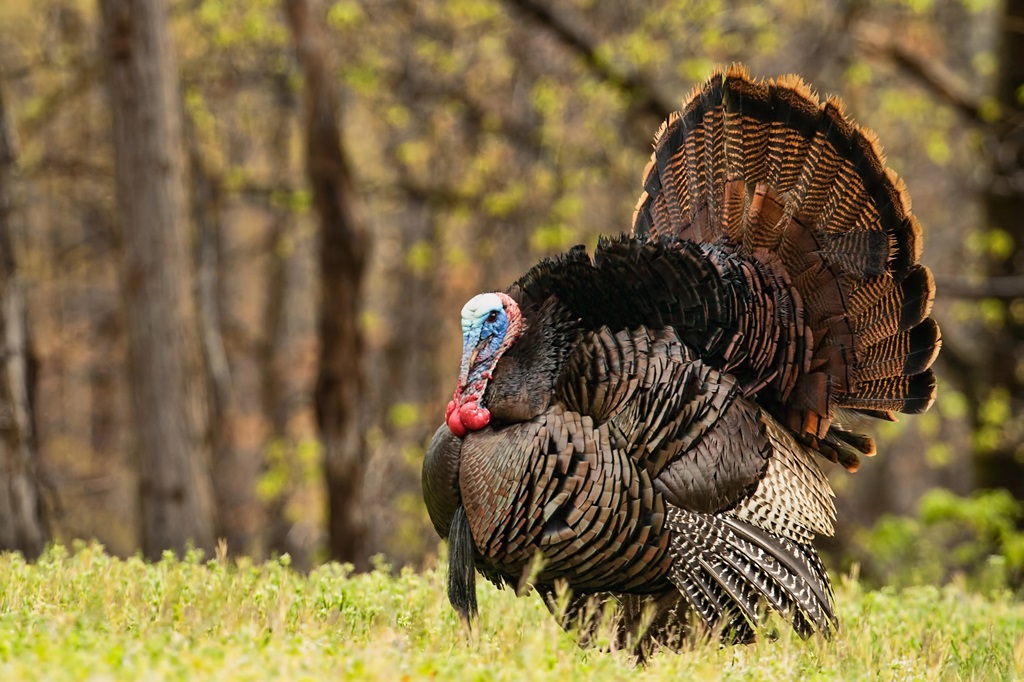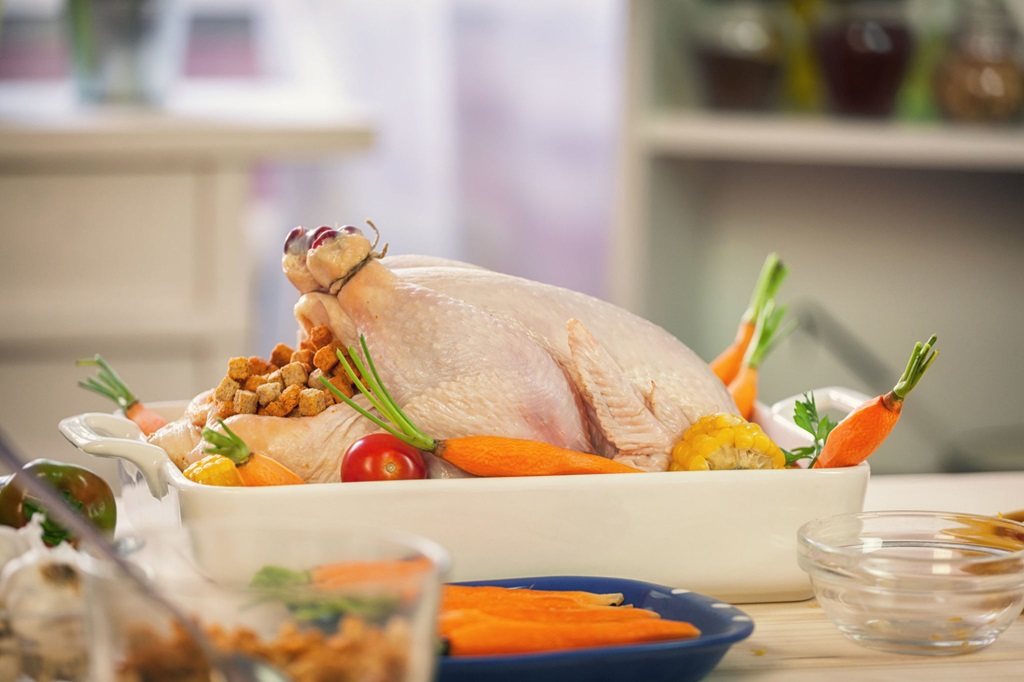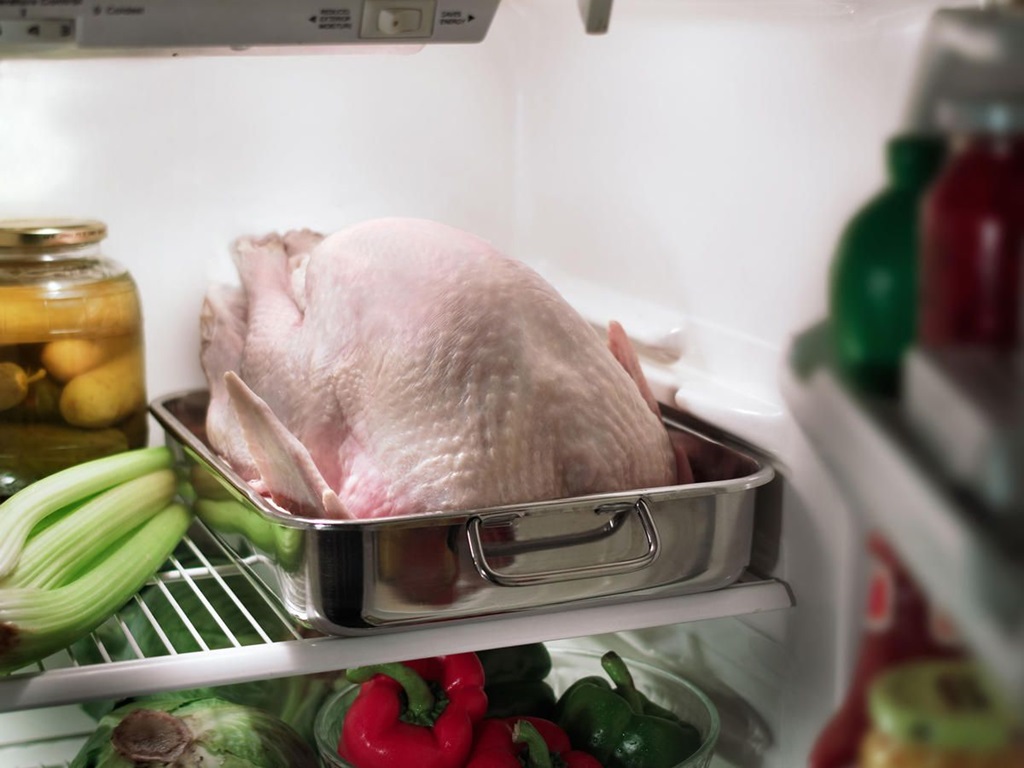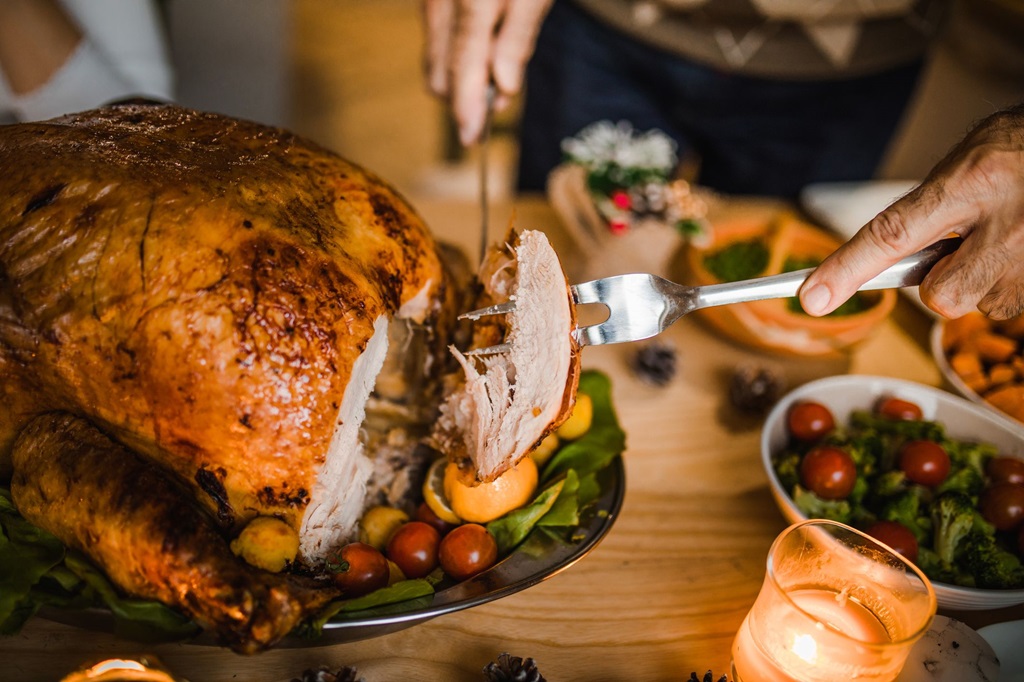
18 Jan How to Tell if Turkey is Bad?
Turkey is a lean and tasty protein that can be enjoyed in everything from sandwiches to stir-fries. However, like any meat, turkey is perishable and can go bad if not stored and handled properly. Eating spoiled turkey can cause unpleasant symptoms like nausea, vomiting, and diarrhea.
Luckily, there are several easy ways to determine if your turkey is still good or if it’s time to toss it. This guide will go over all the signs of spoiled turkey, tips on turkey storage, and how long turkey lasts in the fridge or freezer. Read on to learn everything you need to know how to tell if turkey is bad.
Checking For Visual Signs of Spoiled Turkey
The first and easiest way to detect spoiled turkey is to examine it closely with your eyes. Fresh, unspoiled turkey has a pink, plump appearance with a smooth, moist texture. Here are some visual signs that indicate your turkey has gone bad:
- Change in color: When turkey goes bad, it often takes on an opaque, grayish tinge or the fat may turn yellow. Discoloration is a clear sign your turkey is past its prime.
- Slimy texture: Rotten turkey will develop a sticky, shiny coating and become slimy to the touch. The sliminess is caused by bacteria growth.
- Mold growth: You may notice fuzzy white or black mold growing on the turkey’s skin, or even inside the packaging. This is a tell-tale indicator your turkey has spoiled. Discard any turkey with visible mold immediately.
- Drying out: As turkey gets older, it starts drying out and the skin may become leathery or hardened. Old turkey flesh often looks very firm compared to the moist, tender meat of fresh turkey.
- Rancid smell: Spoiled turkey gives off a putrid, rotting odor that is unmistakable. Trust your nose – if it smells bad, it’s bad.
- Discolored or slimy packaging: Check the turkey’s packaging as well. Leaking, torn packaging, or a foul-smelling liquid in the package indicates the turkey inside has gone off.
Performing The Fridge & Freezer Test

If your turkey doesn’t show any obvious visual or aromatic red flags, the fridge and freezer test is another great indicator of freshness. Here’s how to carry it out:
- For raw turkey, touch it. Raw turkey that is still fresh should feel cool to the touch when you take it directly from the fridge. If it feels warm or is at room temperature, it could be going bad.
- For cooked turkey, smell it. Give cooked turkey a whiff as soon as you remove it from the fridge or freezer. Spoiled cooked turkey will have a distinct, unpleasant odor when cold.
- Check the color. Observe the color of both raw and cooked turkey after refrigerating or freezing. Off-colors like graying, dulling, or unnatural darkening are signs of spoilage.
- Consider surface texture. The surface of fresh turkey is smooth and a bit glossy after refrigeration and freezing. Wrinkling, stickiness, dryness, or tackiness indicate microbial growth and spoilage.
Trust your senses when doing the fridge/freezer test. If anything seems off from the turkey’s expected pink, moist, and fresh condition, it is likely spoiled.
Examining The Sell-By & Use-By Dates
Checking the sell-by and use-by dates on turkey packaging is another simple way to gauge freshness.
- The sell-by date tells stores when to remove the turkey from shelves. Turkey should be purchased before this date for maximum freshness.
- The use-by or expiration date indicates the last day the manufacturer recommends consuming the turkey for food safety and quality.
So how long is turkey good for after the sell-by and use-by dates?
- Raw turkey can be kept 1-2 days past the sell-by date if refrigerated properly. Do not eat raw turkey past the use-by date.
- Cooked turkey can be kept for 3-4 days past the use-by date if refrigerated. Discard any cooked turkey that’s more than a week past the expiration date.
When in doubt, stick closely to the use-by recommendations. Eating turkey even a few days past the expiration risks foodborne illness. The sell-by dates allow some extra leeway, but quality and flavor will decline after purchase.
Is The Turkey Still Frozen?
When thawing turkey in the refrigerator, check regularly to see if the turkey is still icy cold and hard. A completely thawed turkey will feel soft, pliable, and jiggly to the touch.
If the turkey flesh still feels very firm, solid, and frozen in spots, it needs more time defrosting in the fridge. Any remaining ice crystals or frozen sections indicate the turkey is not fully thawed.
A frozen turkey takes about 24 hours per 4-5 pounds to thaw in the refrigerator. If thawed improperly at room temperature, the turkey can enter the “danger zone” between 40-140°F, where bacteria multiplies rapidly.
It is unsafe to cook a partially frozen turkey, as the meat will cook unevenly. Make sure your turkey is 100% thawed before cooking.
Looking For An Unusual Viscosity

Raw turkey contains myosin proteins that break down over time, causing the pink juices in the packaging to become more viscous and gloopy.
Fresh raw turkey juices will be slightly sticky and glossy. As the turkey ages, those juices will become very thick, pasty, and sticky with a cottage cheese-like consistency. This change in viscosity signals spoilage.
After cooking turkey meat, the juices should be clear with a jiggly, gravy-like texture. Gray, slimy, or ropy juices around cooked turkey indicate it is spoiled.
Performing The Poke & Sniff Test
For this test, you simply poke the turkey’s flesh with your finger and deeply sniff the aroma.
Fresh raw turkey feels smooth, moist, and pliant when pressed gently. The meat springs back as you release your finger.
Poking spoiled raw turkey reveals a slimy, mushy texture that leaves an indent. The flesh remains partially indented rather than bouncing back.
Fresh-cooked turkey retains a firm, juicy texture that takes some pressure to poke into. Spoiled cooked turkey will be mushy enough to poke easily and may even release water.
Next comes the sniff test. Fresh poultry has a mild smell. If either raw or cooked turkey smells unpleasant, sulfurous, or especially rotten, it has gone bad.
Watching For Unusual Turkey Behavior While Cooking
Observe the turkey closely as it cooks. Fresh turkey behaves predictably when cooked using standard methods and recipes. Here are some red flags:
- The turkey keeps oozing pinkish liquid long into cooking. Fresh turkey juices will run clear sooner.
- The meat stays stubbornly pink and undercooked looking even after meeting recommended cooking times.
- The skin appears very dark or charred but the inside looks underdone. The fresh turkey cooks evenly.
- There is an atypical odor emanating from the oven. Cooked turkey should smell savory, not sour or rotten.
- The bones protrude visibly from the meat as it cooks. Older turkey flesh shrinks back more from the bones.
- The meat seems tough, rubbery, or dry compared to a normal cooked turkey texture.
When In Doubt, Throw It Out
Turkey that smells bad, looks weird, feels slimy, or otherwise seems off should be discarded. With poultry, it’s always better to be safe than sorry as eating spoiled turkey can cause food poisoning.
Don’t let the cost of the wasted turkey convince you to keep questionable meat! Getting sick from foodborne illness can result in hospitalization and serious complications that just aren’t worth risking to save a few bucks on groceries.
Stick to Turkey which passes all freshness tests with flying colors. If you have any lingering concerns about your turkey’s safety, remember – when in doubt, throw it out!
How To Maximize Turkey Shelf Life & Prevent Spoilage

Now that you know how to tell if turkey has gone bad, it’s equally important to understand how to store turkey correctly to extend its shelf life and prevent spoilage in the first place.
Store Turkey Properly After Purchase
- Keep raw turkey refrigerated at 40°F or below immediately after purchase. Leave it in the original airtight packaging until you are ready to use it.
- Freeze raw turkey if you can’t use it within 1-2 days of purchasing. Frozen, unopened raw turkey lasts 9-12 months.
- Either refrigerate cooked turkey at 40°F or less or freeze at 0°F. Refrigerated cooked turkey keeps 3-4 days. Frozen cooked turkey lasts 4-6 months.
- Always place turkey on a plate or bowl to catch any juices and prevent cross-contamination of bacteria onto other foods.
- Keep turkey away from the freshest parts of the fridge like the door shelves. Store it toward the back where temps are most consistent.
Monitor For Temperature Fluctuations
- Use a refrigerator thermometer to regularly verify temps stay at 40°F or below. If the fridge temp creeps higher, make adjustments.
- Ensure your freezer maintains a temperature of 0°F. Fluctuations above freezing will shorten turkey’s shelf life drastically.
- Immediately return the turkey to the fridge or freezer after removing it to thaw for use. Never leave it sitting out at room temperature.
Handle Turkey Safely When Thawing
- Thaw turkey in the refrigerator allowing 24 hours per 4-5 pounds. Place it on the bottom shelf to prevent raw juices from dripping onto other food.
- To thaw faster, place the sealed turkey under cold running water. Rotate periodically and change the water every 30 minutes until thawed.
- Thaw turkey in the microwave only if cooking it immediately. Microwaving partly and then refrigerating will disrupt the cells and spoil faster.
- Never thaw turkey at room temperature or in hot water. This puts it in the danger zone for rapid bacteria growth.
Use Proper Portioning & Storage After Cooking
- Carve cooked turkey into smaller portions on a clean cutting board to allow it to chill quickly. Store in shallow airtight containers.
- Only keep cooked turkey 3-4 days in the fridge. Use turkey broth and scraps within 1-2 days. Freeze the remaining turkey immediately for longer storage.
- When reheating turkey, reheat fully to an internal temperature of 165°F. Bring sauces like gravy, soup, and chowder with turkey leftovers back up to a full boil before serving.
Trust Your Senses

Your eyes, nose, and fingers offer the best indicators of freshness when it comes to raw and cooked turkey. If anything seems amiss – the turkey has an odor, odd appearance, or texture – do not risk eating it. Always inspect and smell turkey before cooking or eating leftovers. When properly handled and stored, turkey can stay fresh and usable for a week or more. But once spoiled, turkey can make you very ill, so never ignore the signs of bad turkey!
Conclusion
How to tell if turkey is bad is all about trusting your senses. Smell, look at, and touch the turkey raw and cooked. Know the visual signals like sliminess, foul odors, and unnatural colors. Check the sell-by date for guidance and store all turkey properly at 40°F or below. Take special care when thawing. If in doubt, remember it’s always better to be safe and toss out suspect turkey. By understanding how to determine bad turkey and implementing smart storage habits, you can enjoy delicious and healthy turkey dishes for days without worry. Just follow basic food safety rules, and your turkey will have a long shelf life.
Frequently Asked Questions About Spoiled Turkey
1. How long can I keep the turkey after opening the package?
You can keep fresh, raw turkey for 1 to 2 more days after opening the package as long as it has been continuously refrigerated at 40°F or below. Poultry that has been opened has a shorter shelf life and should be used immediately for best quality.
2. Can you get food poisoning from bad turkey?
Yes, eating spoiled, undercooked, or contaminated turkey can give you food poisoning. Turkey is prone to harbor salmonella, E. coli, campylobacter, and other bacteria that can cause vomiting, stomach cramps, fever, and diarrhea. Leftovers and raw turkey are the biggest risks.
3. What bacteria causes turkey to go bad?
The main bacteria responsible for turkey spoilage are salmonella, listeria, campylobacter, and strains of streptococcus. These bacteria are killed when the turkey reaches the recommended safe cooking temperature of 165°F internally. But they rapidly multiply in the “danger zone” between 40-140°F.
4. Does cooking kill bacteria in turkey?
Proper cooking kills bacteria present in or on raw turkey. The internal temperature must reach 165°F throughout the meat to effectively destroy bacteria. Partial cooking may not kill all bacteria, allowing illnesses like salmonella to occur.
5. Can you get sick from eating turkey with an off smell?
Yes, you can get sick from eating turkey with a rancid, sour, or rotten smell. That odor is caused by microbial growth and spoilage. While heat may kill bacteria, toxins released by microbes can still cause illness if the turkey smells bad, so never eat it.

Sorry, the comment form is closed at this time.